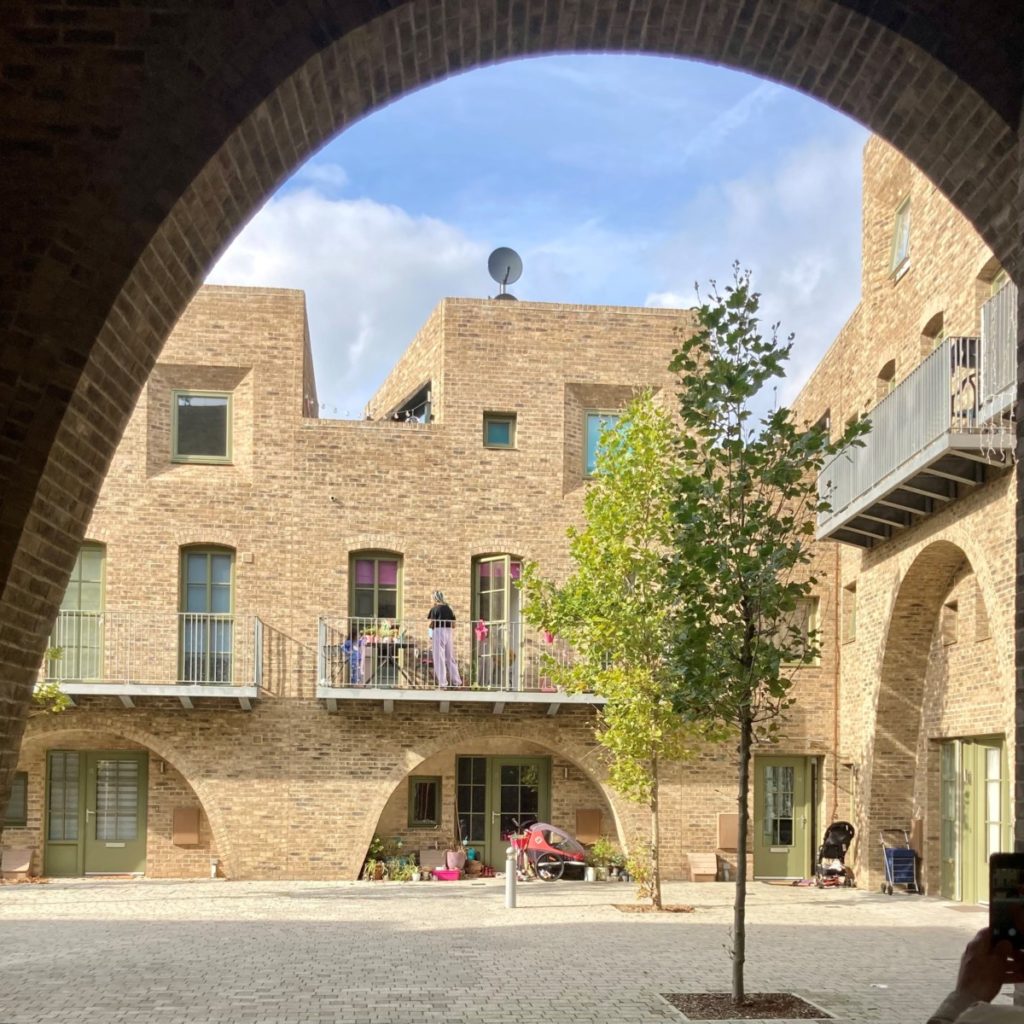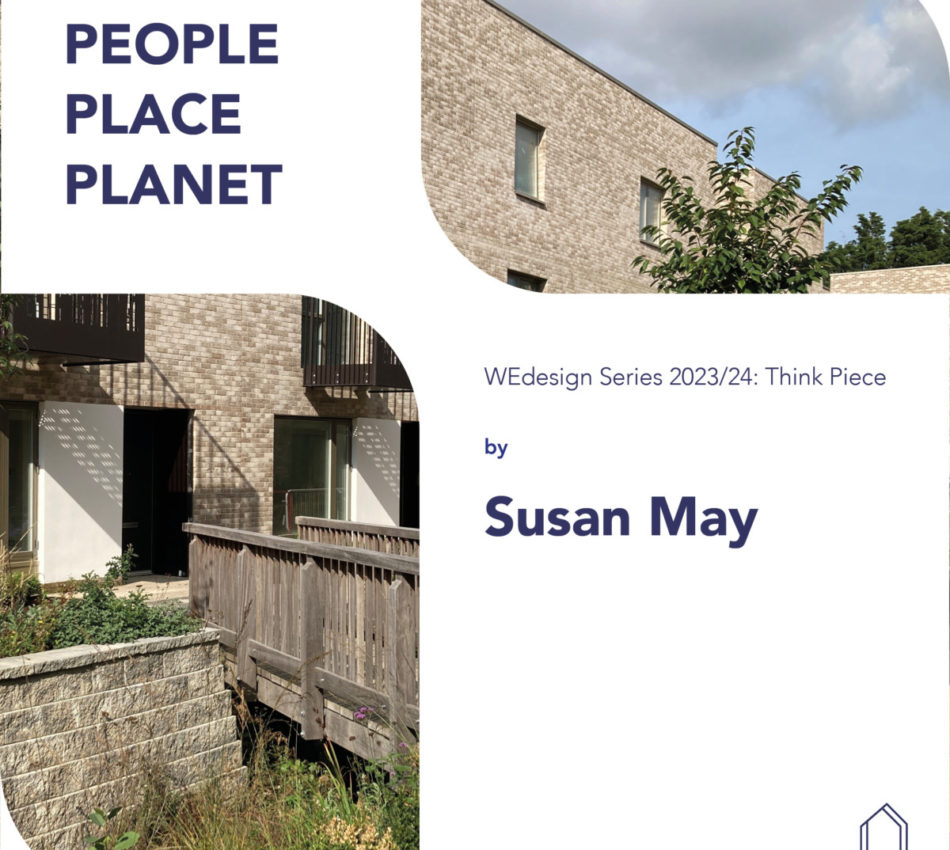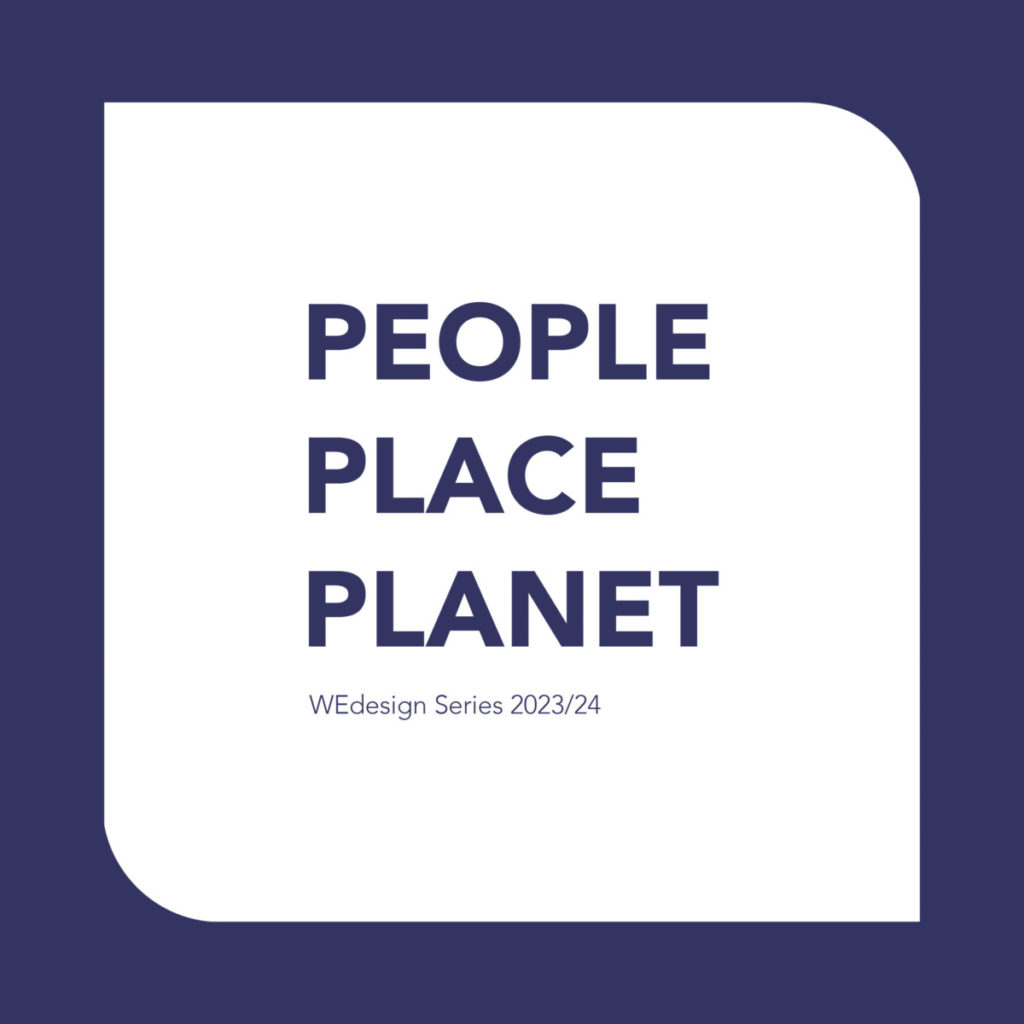Written by:
People, Place, Planet: Think Pieces, are a series of online blogs which will take our event series theme as a starting point and will offer an external voice and provocation.
In our final edition of our People, Place, Planet: Think Pieces Susan May offers some thoughts on how we can better join up the needs of People, Place and our Planet.
People Place Planet, belonging together
I think people, place and planet operate in a similar way as the three ingredients of the ‘fire triangle’ needed to sustain a fire. If a community is to grow and thrive, people, place and planet need to support each other over time.
But what do we mean by each one, in practical terms? What do people, place and the planet actually need?

The stress-testing of the pandemic showed what people need to live well at home, eloquently expressed by the Home Comforts survey report: a comfortable environment; good space with access to private space outdoors and ability to work well at home. Flexible, spacious homes help with this, enabling people to put down roots over time, with a rich variety of ways to use space – for work, care, eating, education, entertainment, rest and socialising – converting easily from one use to another, or operating at the same time. This activity needs to be able to spill out from inside to outside, onto balconies, doorsteps, gardens and the street to connect well with neighbours and the wider locality. The report found that people value local, green space – walkable neighbourhoods with facilities close at hand.
Places which work well enable activities to extend out from the home into the locality, with space to relax, socialise, be active, have fun and play, providing a range of activities and allowing people to interact in a safe and welcoming environment. The National Design Guide sets out ten characteristics of well-designed places which mark out places which work well for people and for nature. And as Jane Jacobs explained, for this to happen places need sufficient numbers of people, connected routes, a mix of building ages, sizes and types, and a variety of uses – residential, cultural, retail, work and industry.

And how about the planet? Nature needs the right type and amount of air, soil, rainfall, sun, shelter and space, with linkages to create corridors and routes. The natural world extends from wild and managed countryside with small settlements all the way to the city centre – with life flourishing from window boxes to hedges, rain gardens to ponds, ‘edible’ bus-stops to allotments, riversides to parks and greenways.

So how do the needs of people, place and planet join up? At Urban Design Learning we were keen to explore with others creative new ways of thinking as we came through the pandemic, leading to our Urban Challenge report. This introduces the idea of a ‘multi-timed city’, with flexible homes at the centre and successive circles which people inhabit, moving outwards from the ‘home circle’ within a minute of the doorstep, to the ‘neighbour space’ five minutes within reach and on to the 15 minute circle which people can reach by walking. The circles then widen to the 30 minute city – the local town centre and amenities, and the 60 minute city with big-ticket draws such as museums, concerts and specialist shopping and cultural destinations. Shorter, more frequent, walkable journeys can be made closer to home and longer, less frequent journeys used to travel to the biggest venues in the city centre – keeping use of the planet’s resources to a minimum. Each circle is inter-dependant, only truly successful if the others work well.

So is this happening on the ground? Some fantastic examples already exist, particularly at the home and neighbourhood scale. A House for Artists in Barking has created a simple open footprint for homes, which allows rooms to be configured in a number of ways. Wide balconies promote neighbourliness and creativity, and community space on the ground floor connects activity to the street. Homes at the Knights Park development in Eddington, Cambridge have generous space standards with flexible room arrangements, adaptable for future generations with storage and amenity at multiple levels. These are located in ‘social streets’ with trees and sustainable drainage with generous landscaping, connecting walkable and ‘wheelable’ routes to local amenities. Peter Barber’s projects demonstrate flexibility to achieve ‘the potential for social action and activity’. However, examples such as these are the exception, not the norm.

We need to see this joined-up thinking at all scales of place, co-created with the community. Often development is proposed which doesn’t work for people, or for place, or for the planet, with minimal amenity for homes, with the development leaning heavily on place and nature in the wider area to ‘prop up’ poor design.
I like the word ‘cherish’. It’s not used much these days – when you sit it alongside words more commonly used in the industry – ‘efficiency’, ‘value engineering’, ‘optimisation’, and ‘adequate’ – it stands out. It pays attention, shining a spotlight, noticing, applauding, encouraging what is good.
Can we cherish people, place and planet – all together? A focus like that could light up our communities, and sustain them for the long term.
References:
Home Comforts, Place Alliance, 2020
National design guide, MHCLG, 2019.
The Death and Life of Great American Cities, Jane Jacobs, 1961, ISBN 0-679-60047-7
The edible bus stop – Incredible Edible Lambeth
The Urban Challenge report including Multi-timed cities, Urban Design Learning, 2023.
A House for Artists review – perky, punchy affordable housing that inspires on all fronts, The Guardian, 12 Dec 2021 Projects and Manifesto, Peter Barber Architects
About the Author
Susan May

Susan is Head of Housing Design at Urban Design Learning, a not-for-profit organisation founded in 2002 to support built environment professionals to create well-designed spaces and places. As a housing specialist, Susan is passionate about place and delivering for communities, for the long term.

About the WEdesign 2023/24 Series: People, Place, Planet
People, Place, Planet is our theme for The Glass-House 2023/24 WEdesign series.
As we continue to shape our places, we are faced with the huge challenge of balancing our personal needs, the collective needs of our communities and those of our increasingly fragile planet.
This series will aim to identify and explore the opportunities and synergies that exist when we strive to balance people, place and planet in placemaking.
How can we think differently about how we shape our places? How can we collaborate more through design and placemaking to value and respect people, place and planet equally?
To find out more about the full 2023/24 series, visit our People, Place, Planet page on The Glass-House website.
WEdesign is The Glass-House’s annual series of free interactive public events, held online and in-person in cities across the UK, where we explore collaborative design in placemaking through discussion, debate and playful co-design activities.
To find out more about the WEdesign Programme, visit the WEdesign page on The Glass-House website.
WEdesign is supported by the Ove Arup Foundation.

